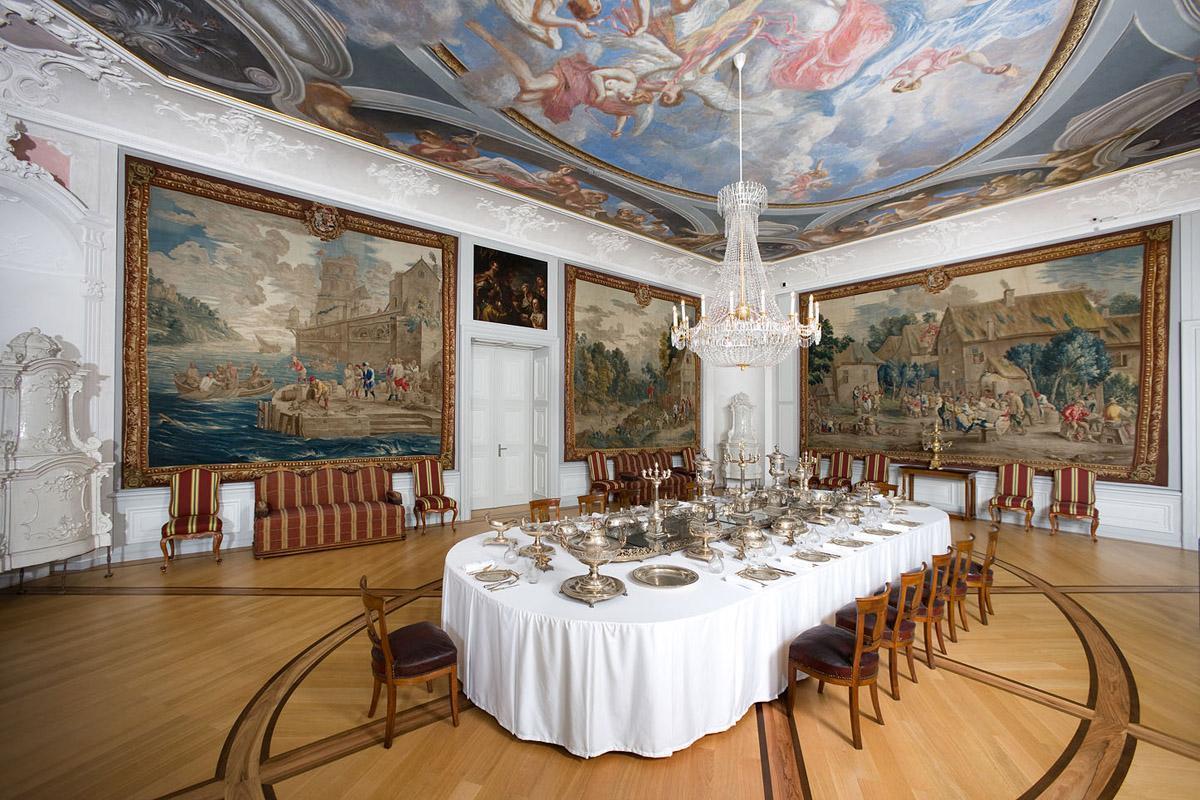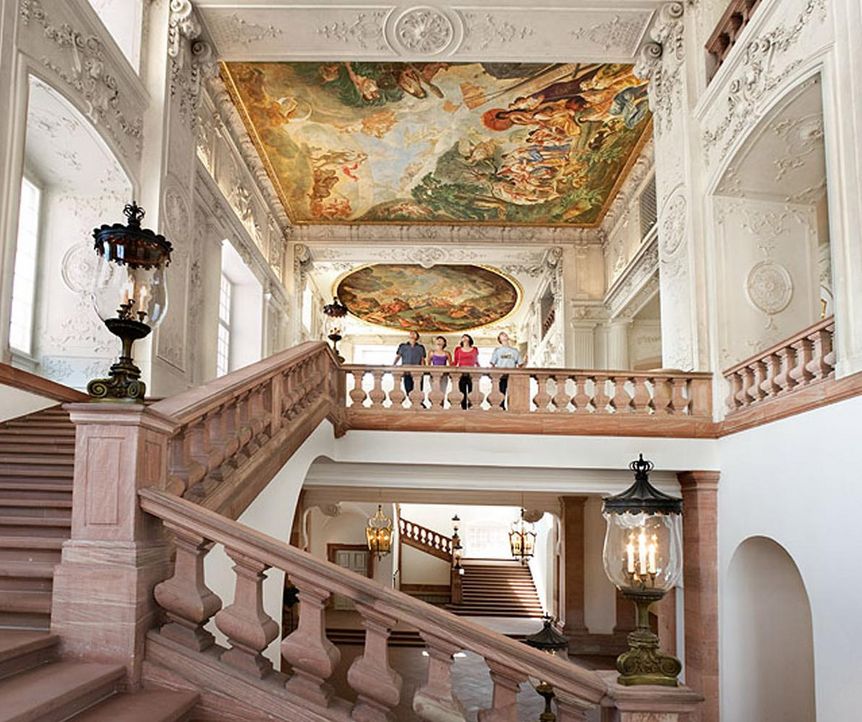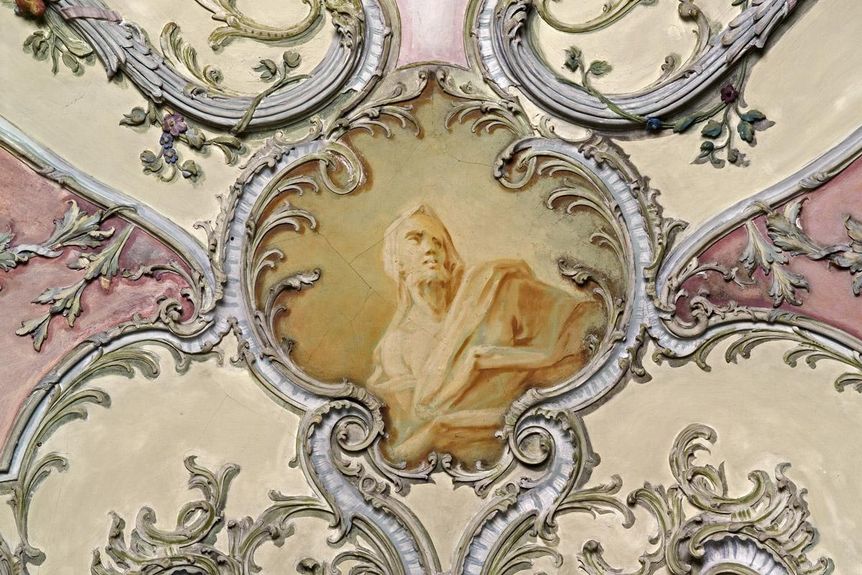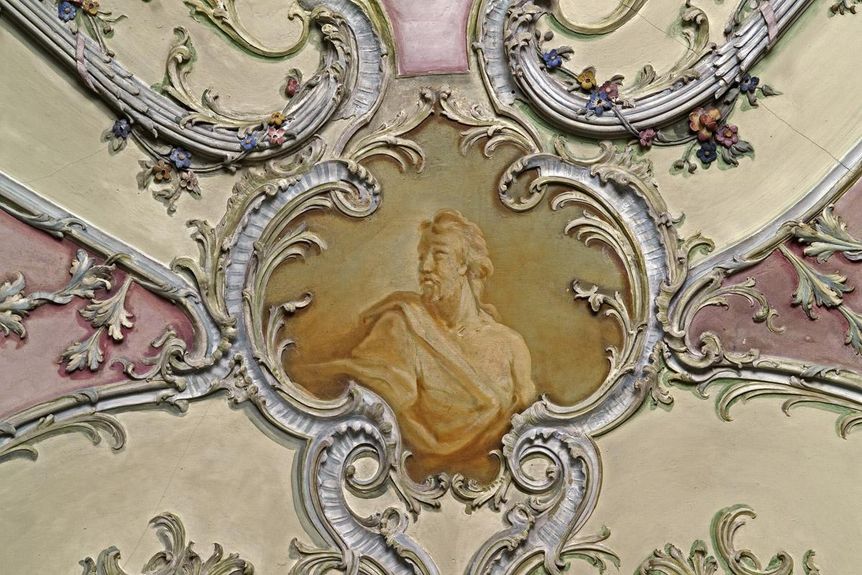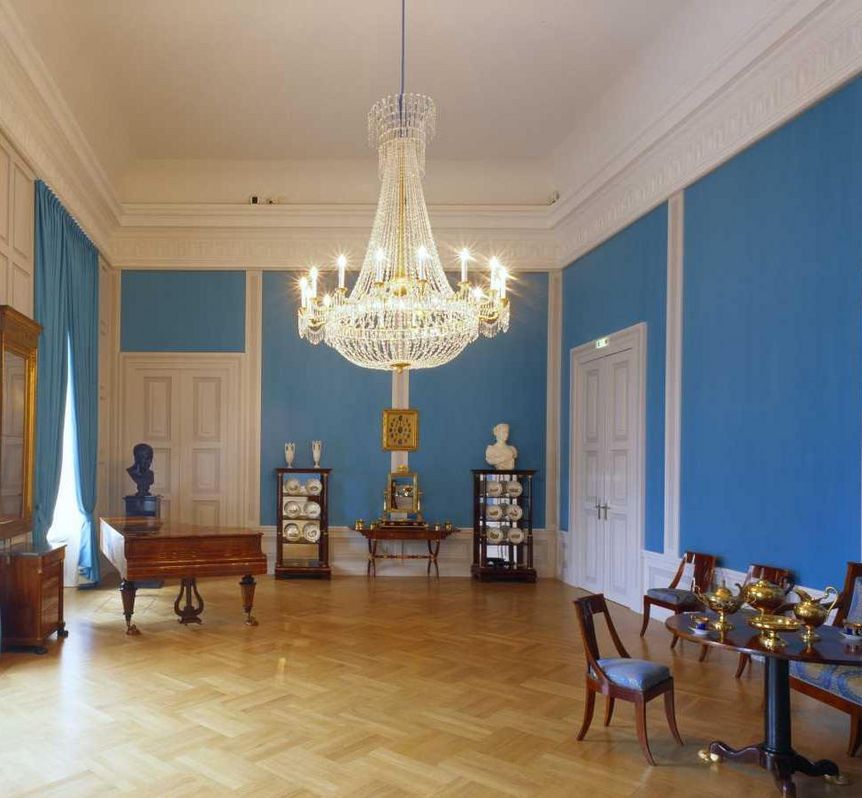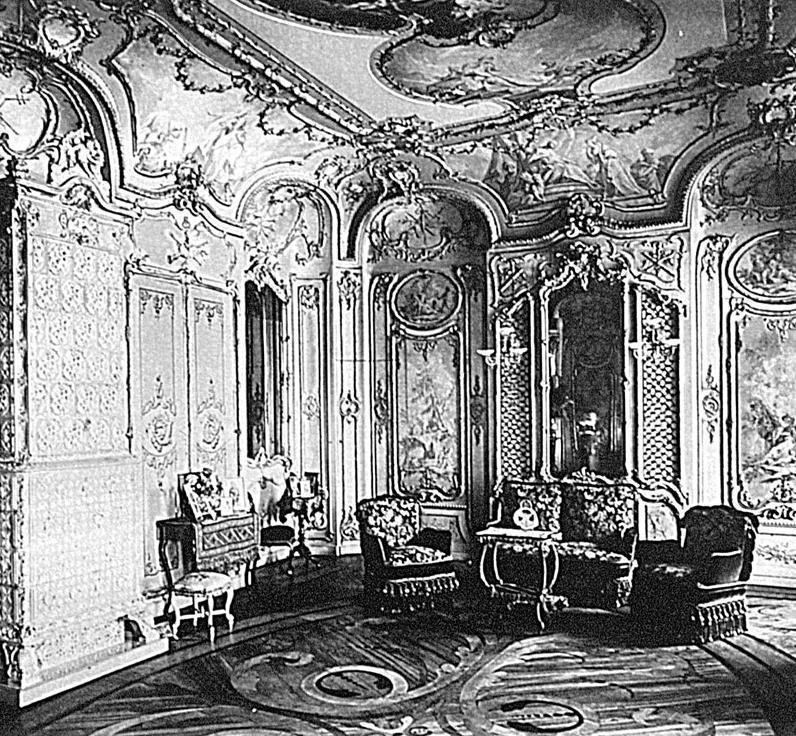Baroque facade, changing roomsHistory of design
Mannheim Palace was created in the Baroque era, and so it remains today: a symbol of power made stone. In the interior, subsequent generations changed the furnishings, from the Baroque originals to Rococo and Empire, and even the Historicism of the 19th century.



